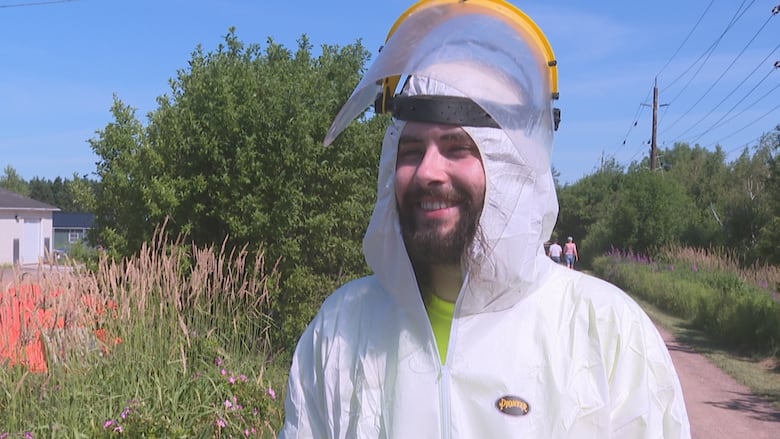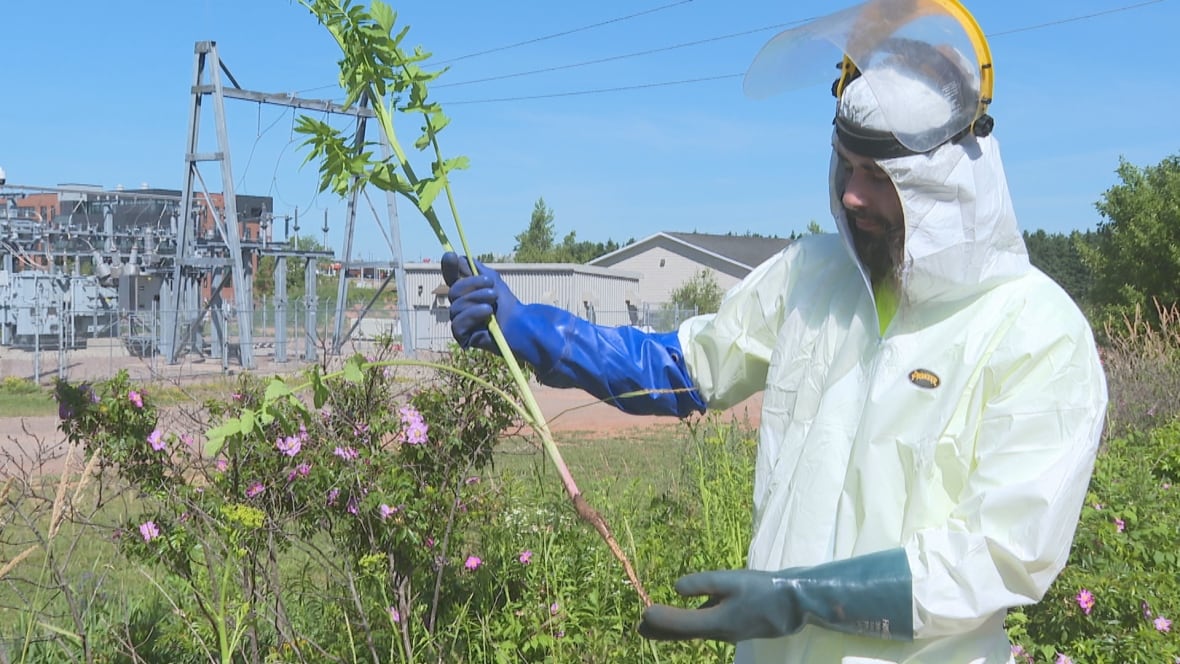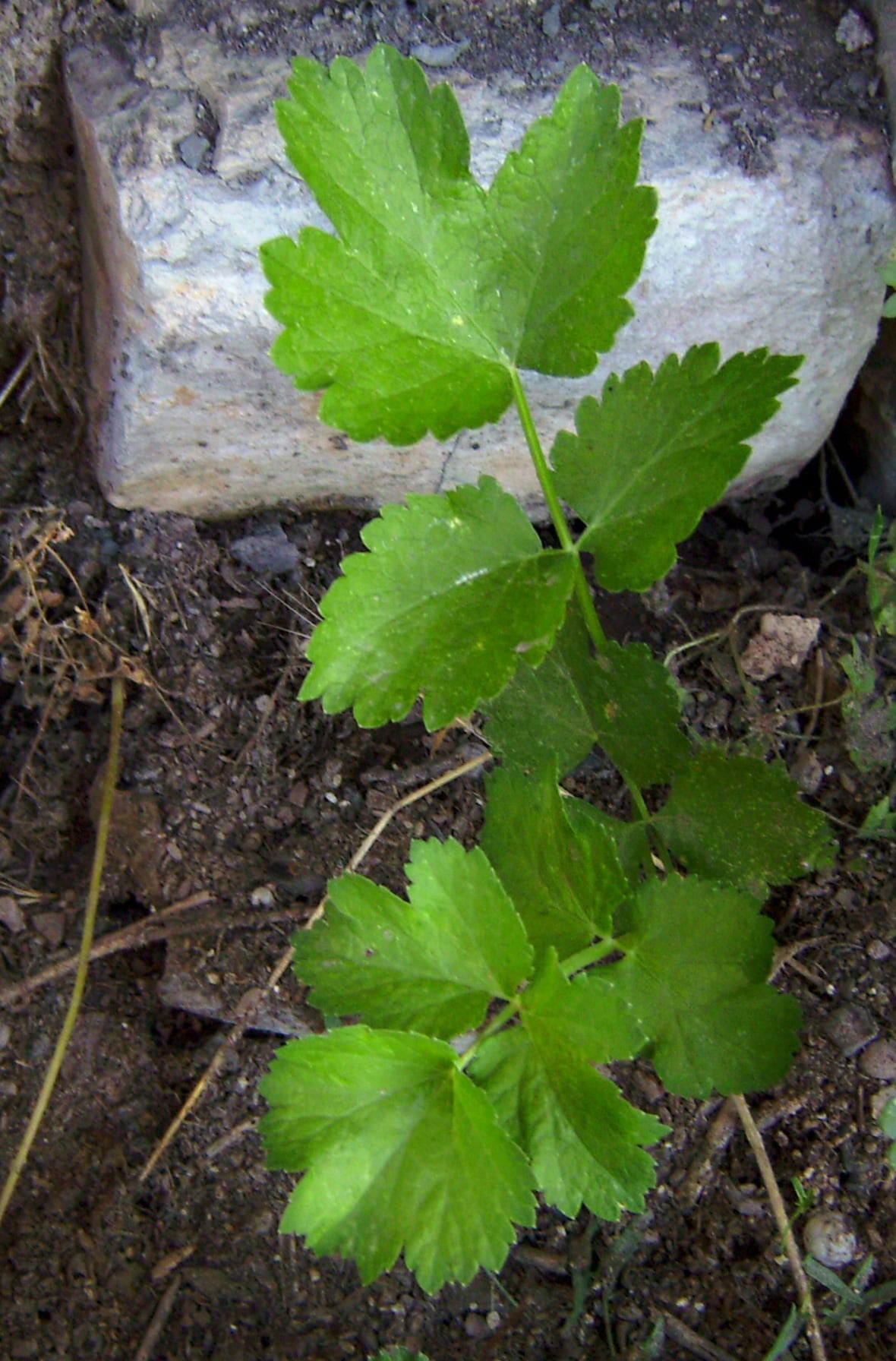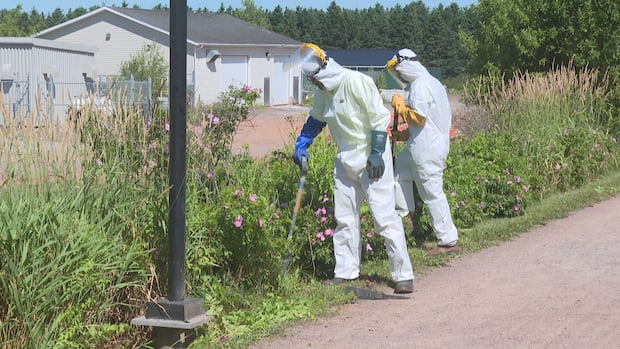Islanders being asked to report sightings of toxic, skin-burning wild parsnip
The invasive plant’s sap can cause painful burns and blistering if you touch it

The Prince Edward Island Invasive Species Council is asking Islanders to keep an eye out for wild parsnip and report any sightings so it can safely remove the plant.
Wild parsnip is an invasive plant often found along open areas such as trails and roadsides. Like many invasive species, it poses a threat to P.E.I.'s forest ecosystems, particularly along forest edges and in open spaces of a wooded area.
While the plant's root is edible, its sap causes a chemical reaction on skin when it's exposed to the sun, resulting in weeping blisters and burns.
"I've personally gotten a couple of burns from wild parsnip. It's not fun," said Clay Cutting, an invasive species technician with the council.
"It does warrant, often, a trip to the hospital just to be sure, or at least a trip to your doctor. I had a consultation with an ophthalmologist and a dermatologist because I got it on my face."
Cutting said doctors advised him to try using a hydrocortisone cream to treat the burns.
Chase Guindon, the council's co-ordinator, added that anyone who comes into contact with the plant's sap should immediately move to a shaded area and wash the affected skin with water.
How to identify the species
Last week, people from the council joined staff from the City of Charlottetown to remove wild parsnip from a section of the Confederation Trail behind the University of Prince Edward Island. They had received a report from the province's Forests, Fish and Wildlife division that the plant was growing in that area.

Because of the plant's toxic sap, the team had to wear full chemical protective suits while digging out the plants.
Guindon said it's especially important to remove wild parsnip from public spaces like trails, where people may unknowingly touch it while walking, running or biking.
He said this member of the carrot family can be recognized by its bright yellow flowers and flat-topped, umbrella-shaped flower heads. It also has a grooved stem that's a bright lime green.

Wild parsnip leaves are broad, twice as long as they are wide with toothlike serrations on the edges. The leaves are lower down on the plant.
"You can see the leaves are a compound leaf, and each little leaflet on the compound leaf itself is almost a mitten shape. So it looks like it kind of has the finger area and then a little thumb coming off of it as well," he said.
Guindon noted that the plant resembles Queen Anne's lace, but wild parsnip is larger and less delicate, and has yellow flowers instead of white.

Record and report
So far, Guindon said the plant has not spread widely across P.E.I.; the council is aware of only about 10 locations.
But he said wild parsnip has the potential to spread quickly and out-compete native species that local wildlife depend on for food and shelter.

The council encourages anyone who spots the plant to contact it by email or through Facebook, including photos, a description and location information. That way, staff can safely remove it.
Islanders can also share sightings of wild parsnip through iNaturalist, an app that allows users to share photos and locations of plants and animals, helping researchers gather data for scientific and conservation purposes.
With files from Connor Lamont
